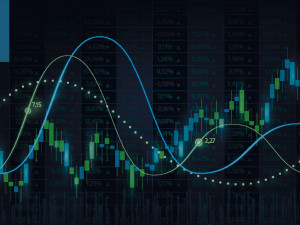
The Shape of things to come
Morning mid-market rates – The majors
24th April: Highlights
- Dire PMI data fails to halt Sterling
- Dollar remains the go-to currency
- PMIs plummet to all time low
Market developing immunity to calamitous data
It seems that traders have accepted that there is a recession on the horizon but in comparative terms, since every economy is in the same boat, single data sets do not necessarily mean a reaction from individual currencies.
If the UK economy is slowing at a rate of 6% per quarter, the U.S, Eurozone, Japan etc. are also slowing at an alarming rate so comparisons are futile.
Manufacturing activity fell from 47.8 to 32.9 while services almost ground to a complete halt falling from 34.5 to 12.3. Consumer confidence also fell sharply. It was negative in March at -9 but has fallen to -34 this month.
As the Government struggles with media criticism over two major parts of the fight against Covid-19; supply of personal protective equipment and mass testing, the absence of Prime Minister Boris Johnson becomes more acute.
With a slowing economy, the delivery of financial aid to businesses is also coming under the spotlight. While the funds have been made available, the terms offered make banks consider the commercial viability of lending to firms who would not otherwise have been either looking to borrow or were not necessarily in a position to apply for new facilities.
The Government’s guarantee of 80% of the principal amount means banks have to consider the balance from a commercial perspective which slows the application. There is pressure on the Government to lift the guarantee to 100% but Chancellor Rishi Sunak in a recent press briefing questioned whether that would make a material difference.
Yesterday, Sterling held its own versus the dollar, rising to a high of 1.2415 but settling back to close at 1.2345, twelve pips higher on the day.
Considering your next transfer? Log in to compare live quotes today.
Risk appetite hit by an unambiguous indicator of slowdown
The fall in price is due to the fact that demand for black gold has collapsed due to two factors. First is more technical, the fact that storage is almost totally full and the price of storing excess supply is rising significantly, while the second is simple, neither business or individuals need to buy fuel for cars or transport vehicles, while demand for heating oil is diminishing seasonally.
This has hit global risk appetite which in turn leads traders and investors to move into dollars as riskier assets become less attractive.
Weekly jobless claims were released in the U.S, yesterday and while they improved by close to 20% from the previous weeks, they are still dire. Close to 4.5 million new claims were made in the past week as the lockdown came under severe scrutiny in several States.
The balance between caution over Covid-189 and the need to get the economy rolling again is delicate as has been demonstrated by several officials of the administration.
The Fed, Treasury and other Government Departments have supplied the means by which both businesses and individuals can survive but actually getting the wheels of activity moving again will take a substantial lifting of the lockdown.
Next week will see the release of activity data, which is unlikely to make easy reading, but the April unemployment report is not due until May 8th.
The dollar index continues to consolidate above the 100 level. It appears to be building a solid base for another move higher but that will depend on a further fall in risk appetite or an improvement in current activity. Yesterday, it rose to a high of 100.69, closing at 100.49.
Recovery depending more and more on unified effort
Behind the headlines is the realization that the economy is likely to slow by close to 7.5% this quarter which will lead to an unprecedented slump.
With officials in Brussels and various EU capitals seemingly unable to find a solution while various members of the Eurozone are unwilling to take a leap of faith by guaranteeing the debts of other sovereign nations which would be the effect of the issuance of Coronabonds.
It is time for some innovation from Christine Lagarde and Ursula von der Leyen, since the stand of Germany, Holland and several other nations won’t change.
Meanwhile the most indebted nations will struggle to find finance, this will bring into sharp focus the entire meaning of the union. It is possible that Italy and Spain could easily default on debt in the long term which could force them to leave the Eurozone. However, it is fairly certain that Italy, at least, will jump before it is pushed, leading to the demise of the entire project.
That is for the future but in the short term at least, the limited lifting of the lockdown will bring some relief although concerns over the possibility of a second peak remain.
Yesterday, the single currency trod water, trading between 1.0846 and 1.0756, closing at 1.0777

About Alan Hill
Alan has been involved in the FX market for more than 25 years and brings a wealth of experience to his content. His knowledge has been gained while trading through some of the most volatile periods of recent history. His commentary relies on an understanding of past events and how they will affect future market performance.”



